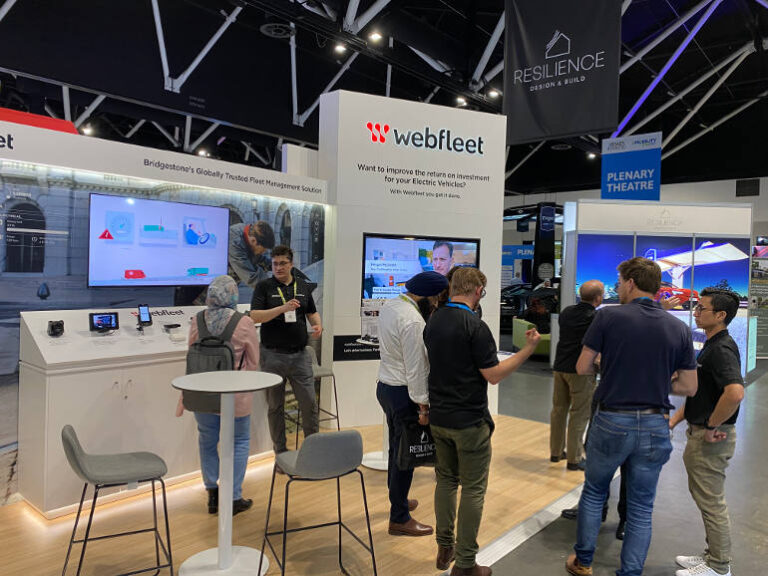Jonny Clarke, Australian Sales Director of Europe’s biggest telematics group — the Bridgestone-held Webfleet, talked about the changing local EV landscape and lessons available from the northern hemisphere where adoption of low-emissions vehicle is ahead of Australia.
“We’ve got that ability to take learnings from Europe and elsewhere and implement that into our knowledge sharing in Australia,” said Clarke, who manages Webfleet’s operations in Australia and New Zealand.
We were talking at the eMobility expo at the Sydney International Convention Centre in October. The Webfleet brand was introduced into Australia after Bridgestone acquired TomTom Telematics in 2019 and rebranded to Webfleet. The unit provides fleet management software as a SaaS solution, has connected cameras, and data solutions, all as part of Bridgestone’s mobility solutions business unit.
“Part of the reason we’re here today at eMobility Live is that we’re a business that has goals to support other businesses as well as our own towards net zero,” said Clarke, adding, “Let’s say a business has or is considering adopting electric vehicles, we can give them data to actually analyse their current fleet to suggest this vehicle would be suitable to replace right now for an electric vehicle.”
Webfleet has learnings to draw on from Europe where it’s headquartered and where as Clarke points out adoption of electric vehicles outpaces here. Australia still records less than 5 percent of new vehicle sales as electric compared with the UK share of about 15 percent, and 17 percent in broader Europe.
Clarke said problematic supply of electric vehicles to Australia, and an immature charging network, were among things continuing to contstrain take-up locally.
“We’re seeing the demand. We’re seeing a wider adoption of electric vehicles, but we need to get the vehicles into the country also,” said Clarke. “It’s ultimately about convincing the manufacturers to supply us with those vehicles for the uptake.”
Meanwhile, Webfleet has developed a fleet electrification reporting system to identify which vehicles could actually be adopted right away. It has the data to drive fleet efficiencies, reduce costs, reduce carbon emissions, and improve driver safety, said Clarke.
The benefits of converting to reduce emissions is considerable. Clarke enumerated: “Our European EV data had professional services light vehicles travelling 35,000 kilometres on average per year. Over that journey, that’s 343 litres of fuel saved, and that’s just under one tonne of Co2 emissions. But if we look at last-mile delivery, our data had them travelling roughly 59,000 kilometres per year, and replacing their heavier vehicles with an EV would save over 3,000 litres of fuel, that’s over 8.3 tonnes of carbon prevented from entering the air.”
In Australia, transport — of which commercial fleets make up a big part — will soon become the biggest carbon emitter, so it’s incumbent upon the sector to do all it can.
“It’s a duty, I guess,” said Clarke, adding, “Anything we can do to help save the world and create longevity is a benefit.”






